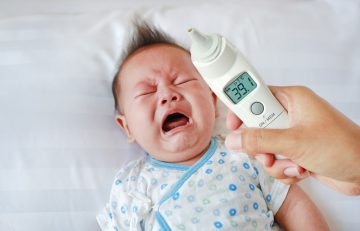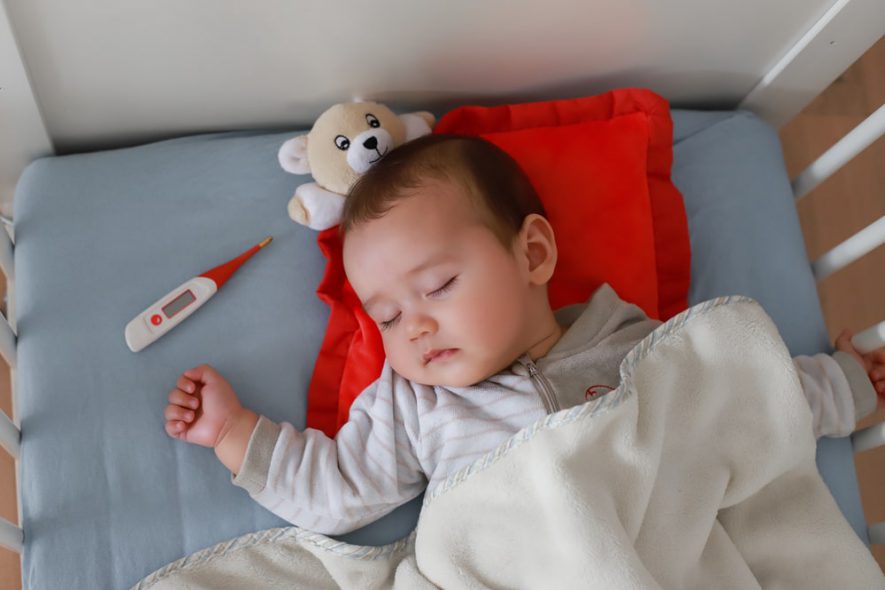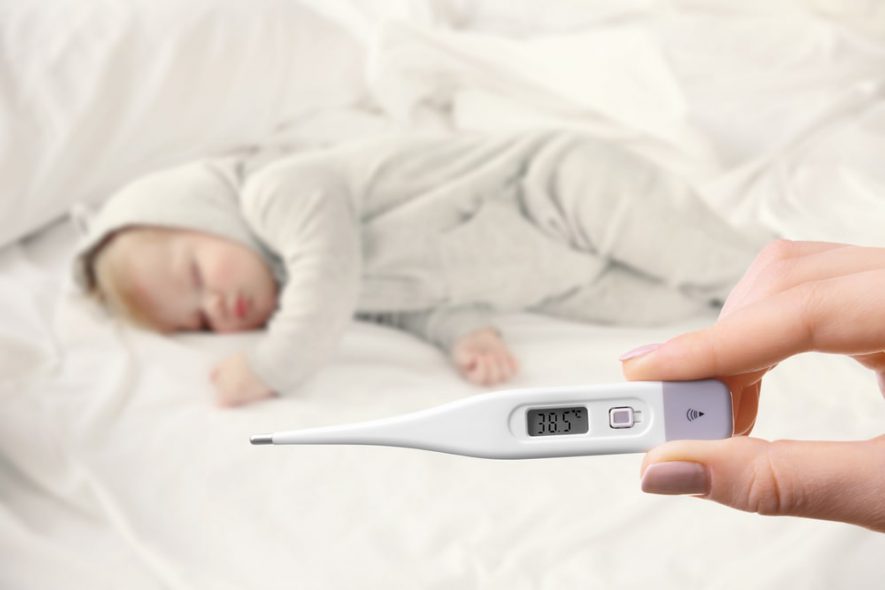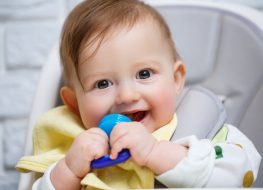
If your little one wakes up in the middle of the night crying and fussing but doesn’t want to eat, it may be an indication that they are coming up with a fever. There are numerous causes of fever in infants. Generally, fevers are not life-threatening, but the root cause can be.
For infants younger than three months, you should seek the consultations of pediatricians at any sign of fever. Babies with minor fevers who are older than three months old can, however, be treated at home. It’s a parent’s biggest fear seeing their little ones sick, but there are things you can do at home to help them get better.
In this blog post, we will share bits of information and tips so you can effectively care for your baby in a time of need.
Identifying a Fever
For adults and little kids, normal body temperature is 37 degrees. In some cases, temperatures may vary depending on the activity or time of day, so don’t panic. In the morning, body temperatures are usually lower than normal.
When your kids are hot from running around or the weather, their temperatures can go slightly higher than 37 degrees—don’t be alarmed. However, when your kid’s temperature reaches 38 degrees or more, it’s a sign that they have a fever.
Among little kids, fever can come from different illnesses like:
- Urinary tract infections
- Pneumonia
- Blood infections
- Ear infections
- Colds
- Sore throats
- Viral infections
If your kids are having a hard time sleeping, and are vomiting, crying, and irritated, their fever may be caused by one of the illnesses above, which requires medical attention. If they seem more or less unbothered, it’s safe to wait for some time to see if the fever goes down on its own.

Home Remedies to Reduce a Baby’s Fever
A parents first instinct is to add layers of clothing on their feverish child to prevent chills. It’s a common sight for kids with fevers to wear socks all day because feet control the body temperature. But is wearing socks really effective for battling a baby’s fever?
Say you’ve consulted with a pediatrician and assessed that your baby’s fever is not threatening. Here are some effective home remedies to lower your child’s temperature.
Fever Medication
The best way to counter fevers is through medication. Be mindful when giving your kids medication. Fever medicine for adults may not be safe for kids. Always look for the label to check if the formulation can be used for little kids. Furthermore, before giving your kids fever medicine, always seek the approval of their pediatrician.
Doctors usually prescribe the dosage based on your child’s weight. So never guess a dosage to give your kids. Keep in mind that medications are usually given for high-grade fevers. There may be other remedies to consider, especially for kids who don’t like taking medicine.
Make Adjustments to Their Clothing
It is common for many households to put socks on a baby with a fever to prevent chills. However, if you want to help cool down your kids, remove their socks, especially during hot times of the day. You can let them wear socks at night when they are about to sleep.
This also works with heavy clothing: removing heavy layers decreases temperature. If your kids don’t have chills, dress them in lightweight clothing. Loosen straps on clothing and increase airflow to cool down their body temperature.
Give Your Kids Lukewarm Baths
Bathing your kids with lukewarm water or sponging them down can lower their body temperature. However, always be vigilant with the water temperature. Make sure the temperature won’t cause your baby’s skin to burn. As a test, the water must be warm but not too hot on your inner arm to ensure it is safe for your kids.
Don’t use ice packs or douse them with a cold towel or alcohol baths. This may cause shivering, which will cause the body temperature to rise.
Keep Your Kids Hydrated
Fevers in kids often come with dehydration. Breast milk and formulation are the best way to keep your babies hydrated. You can also fill their feeding bottles with sterilized water and make them drink from time to time. But don’t overdo it, or they might get full and refuse to drink the milk which most of their nutrition should come from.
You should also be aware of the symptoms of dehydration in children. See if there are tears when they cry. Observe if their mouths and lips are dry. It’s also helpful to check if they are urinating as much as they normally do. If they don’t, these are clear signs of dehydration.

When Should You See a Pediatrician?
If you’re unsure about whether to see a doctor or not, here are some signs to watch out for.
- If your kid’s energy is very low and is showing no signs of improvement.
- If they are crying non-stop and seem very irritated.
- When there’s no improvement after taking medication, and the fever hasn’t gone down after 24 hours.
- If the fever hits 40 degrees and the temperature increases.
Parenting Tips to Keep Your Kids Healthy
The last thing you want for your kids is them getting sick. To protect infants from common infections, a healthy immune system is essential. As a parent, it’s your responsibility that they build a strong immune system. Here are some things you can do:
- Sleep is an important part of boosting your baby’s immune system. A baby typically sleeps 10 to 13 hours a day. Make sure they sleep as intended to get complete rest.
- Breast milk contains nutrients that enhance antibodies and white blood cells. This fights common colds, infections, fevers, and other illnesses. It is best to breastfeed your kids exclusively for up to six months before introducing formula.
- When they start solid food, add fruits and vegetables to their meal time. You can give them occasional sweets but don’t overindulge them.
- Give them time to play because it’s their opportunity to get exercise. Don’t worry about dirt. Germ exposure will help them build antibodies that fight off sickness.
- Avoid using products with too many synthetic chemicals. Products include shampoos, soaps, lotions, toothpaste, and other baby essentials. Always check the label and go for organic if you can.
Final Thoughts
Putting socks on a baby with a fever is a myth when caring for sick babies. However, there are other methods that are doctor-approved in helping your kids fight their fever. We hope you find this article informative.
If you need more parenting tips and in-depth reviews of different baby essentials, subscribe to our blogs for information. Don’t forget to browse our shops for different baby needs—like socks for your little one, feeding tools, safety tools, and other baby accessories.



